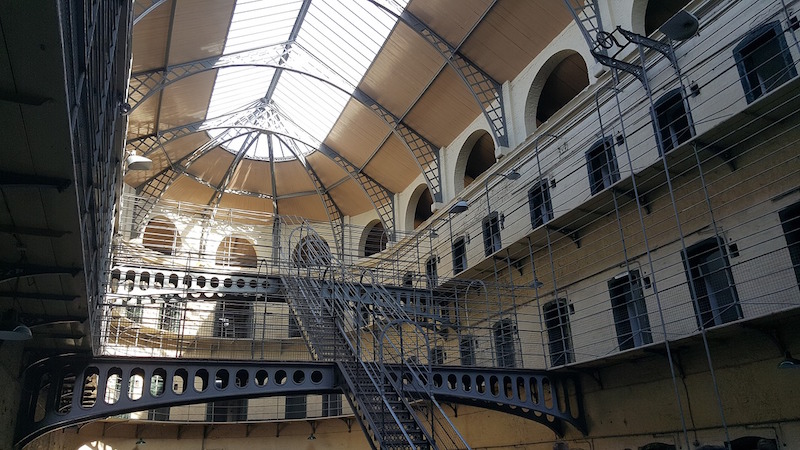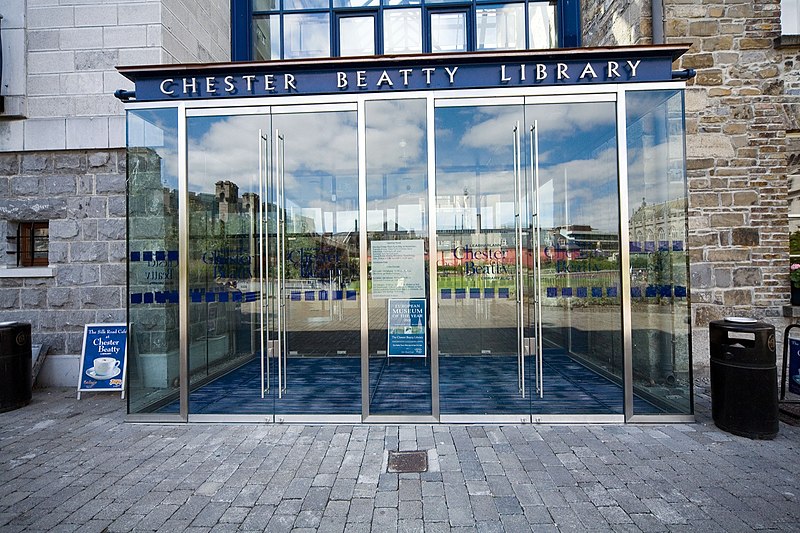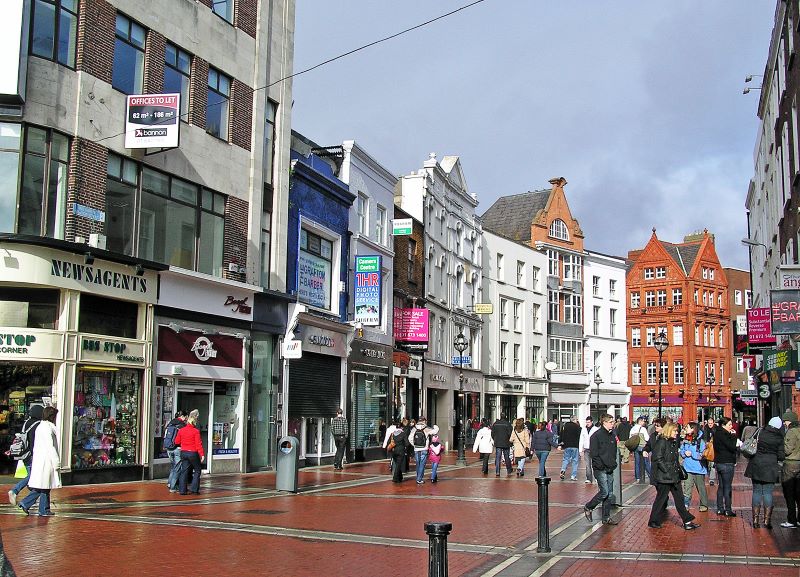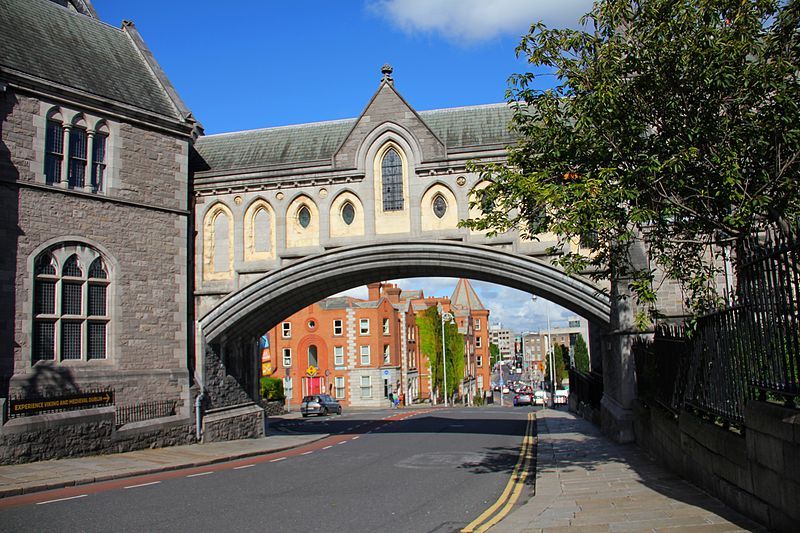Planning a visit to Dublin on a Sunday? Discover the best things to do and see in the city on this day with our recommendations. Explore unique attractions and make the most of your Sunday in Dublin.
Sundays in Dublin are a pleasant combination of rest and adventure. While some locations may have reduced hours or events on this day, there is still a wealth of experiences in this dynamic city waiting to be found.
Dublin has plenty for everyone, whether you’re looking for cultural immersion, outdoor excursions, or just a relaxing day. To help you make the most of your weekend, we’ve compiled a list of things to do in Dublin on a Sunday.
Things you'll find in this article
- 14 Best Things To Do In Dublin On Sunday
- 1. Go to Kilmainham Gaol and Courthouse
- 2. Join a Jameson Distillery Whiskey Blending Class
- 3. Wander at St Stephen’s Green Park
- 4. Have Fun at the Temple Bar
- 5. Discover 14 Henrietta Street
- 6. Visit St Patrick’s Cathedral
- 7. Browse at Chester Beatty Library
- 8. Explore the Phoenix Park
- 9. Travel to the National Botanic Gardens
- 10. Come Aboard the Jeanie Johnston
- 11. Be on a Shopping Spree at Grafton Street
- 12. Travel Back to Medieval Times at the Dublinia Viking Museum
- 13. See the Famine Structures
- 14. Go for a Tour at the Little Museum of Dublin
- Final Thoughts on Things to Do in Dublin on Sunday
14 Best Things To Do In Dublin On Sunday

1. Go to Kilmainham Gaol and Courthouse
Kilmainham Gaol serves as one of Europe’s largest empty gaols. It was established in 1796 as the new county jail for Dublin and eventually closed. It has experienced some of the greatest heroic and sad events in Ireland’s rise as a modern nation at that time.
The jail is a must-see in Dublin, providing a panoramic view of some of the most deep, frightening, and inspiring subjects in contemporary Irish history. The visit includes a one-hour guided tour as well as an exhibition. It is an extremely busy location.
Online reservations are required. You do not need to print tickets; simply keep your order number. Only the ground floor is wheelchair accessible, and a tour of the ground floor may be arranged if necessary.
2. Join a Jameson Distillery Whiskey Blending Class
For more than ninety minutes, visitors are guided by a Jameson Craft Ambassador throughout the process of whiskey mixing, dissecting the ingredients, and taste profiles of Jameson Black Barrel, and utilizing this information to produce their perfect blend.
Guests are taken through the manufacturing process before drinking Jameson Black Barrel directly from a cask in Dublin’s first live maturation house.
Ambitious blenders are going to make the most of their time in the Blending Room, where they will sniff, gauge, and mix their creations to take away.
Expect to be engaged in all of your senses during the event, with some wonderful personal touches thrown in for good measure. Your crafting ambassador is going to be on hand to offer their insider expertise, tricks of the trade, and secret tips to help you find your perfect mix.
To book this tour click here.
3. Wander at St Stephen’s Green Park
St Stephen’s Green Park operates as a significant park and garden in Dublin’s city center. The park, which is maintained by the Office of Public Works, is an essential public asset in the neighborhood, providing an oasis of green tranquility in the center of a bustling metropolis.
Its four centuries of history are dramatic and complicated, featuring such famous people. The park itself has several significant sculptural tributes to Irish history.
The park is also home to several bird and plant species. A children’s play area and a garden for those with visual impairments are among the public amenities in St Stephen’s Green Park.
4. Have Fun at the Temple Bar
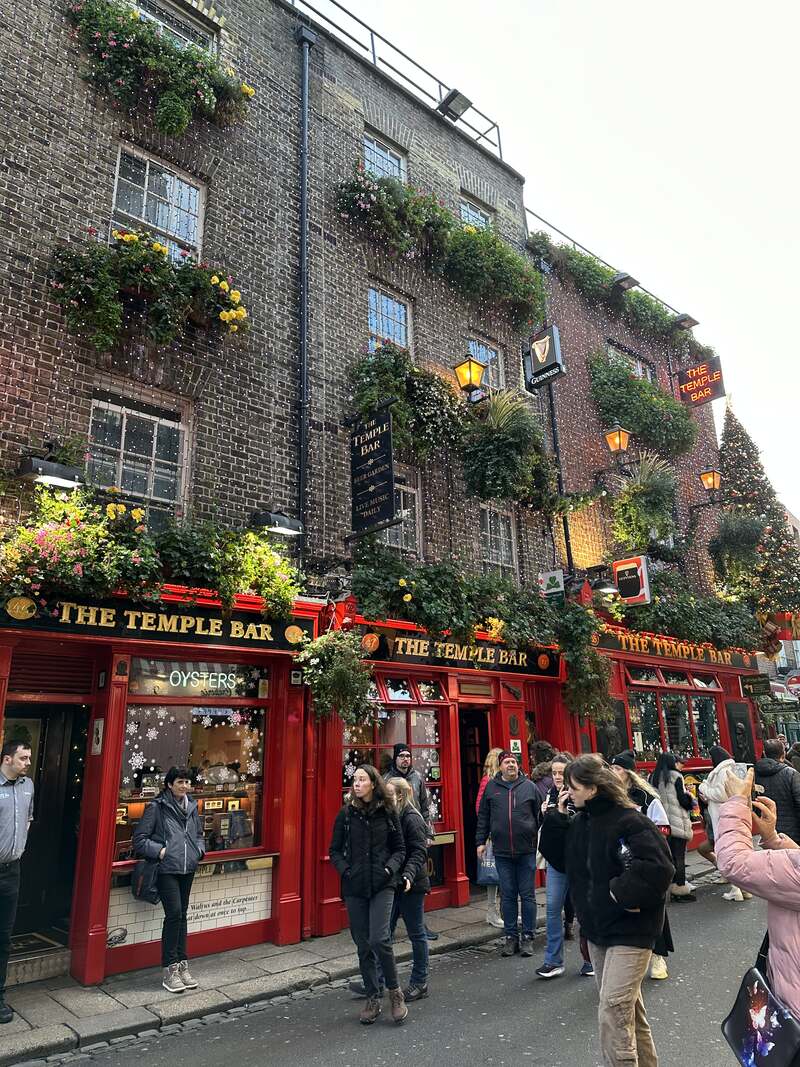
Temple Bar, Image by Christine Rogador
The Temple Bar lies in the center of Dublin and is near to all of the major attractions. If you’re looking for a typical Irish bar, go no further than Temple Bar.
It may be difficult to imagine, but there is a tranquil outdoor hideaway in the midst of this crowded location, where you can enjoy the ambiance of the bar, in the sunlight or rain, out in the cool breeze of Dublin.
The craic is wonderful, whether you are independent or with a group of pals, and you will feel completely at ease in Temple Bar. Overseas and out-of-town tourists will find the staff to be a wealth of knowledge about Dublin’s history and haunts.
The Temple Bar prides itself on quality live music sessions each day and draws together a wonderful sample of skilled musicians from all over the nation. If you need a quick bite to eat before seeing Dublin’s highlights, stop here for a sandwich and beverages.
5. Discover 14 Henrietta Street
When you visit 14 Henrietta Street, you will be immersed in nearly 300 years of city life inside the confines of a single property. 14 Henrietta Street is open on Sundays from 10:00 AM to 4:00 PM.
The building’s secret history is discovered by connecting with the human tales of people who lived at 14 Henrietta Street. Uncover the many eras of Dublin’s history within its walls by visiting the mansion and hearing its stories.
Henrietta Street is Ireland’s finest complete collection of early to mid-18th-century residences. Work on the street began in the 1720s when residences were erected for Dublin’s richest families.
Dublin City Council initiated the acquisition process in 2000, and as a consequence of the Henrietta Street Conservation Plan, went on a 10-year journey to buy, rescue, stabilize, and protect the home, saving it for future generations.
6. Visit St Patrick’s Cathedral
St Patrick’s Cathedral, Ireland’s greatest cathedral, was built about the year 500 beside the well in which the patron saint of Ireland christened the converted.
St. Patrick’s Cathedral was constructed on the site of a modest fifth-century wooden temple. It was replaced by a stone house of worship built by the Anglo-Normans. Throughout the thirteenth century, the structure was repaired and expanded.
St. Patrick’s Cathedral is the largest and most important temple in Ireland. Despite several restorations, some parts of the twelfth-century church may still be seen.
The cathedral is open on Sundays. The Eucharist starts at 9;30 AM, the Choral Eucharist or Matins at 11:15 AM, and Choral Evensong at 3:15 PM. The self-guided cathedral admission for adults ranges from 9.83 USD to 10.92 USD and children 5 years old and below are free.
To book this tour click here.
7. Browse at Chester Beatty Library
The Chester Beatty Library serves as an art museum and library that holds Sir Alfred Chester Beatty’s extensive collection of artworks.
The Chester Beatty Museum is Ireland’s preeminent institution for developing awareness and knowledge of different cultures, as well as engagement with the people whose traditions are represented in the Collections.
The Library houses some of the best treasures entrusted to the Irish people by the world’s major cultures and faiths. Among the most significant items on exhibit are Egyptian papyrus scrolls, the Bible, and European medieval along with Renaissance manuscripts.
8. Explore the Phoenix Park
In the 17th century, the park was known as the Royal Hunting Park, and it was home to a vast herd of fallow deer. In reality, the people you see moving around freely today are its offspring.
Phoenix Park is twice the size of Central Park in New York. It is open all year and its two main gates are open 24 hours a day, so you may spend hours relaxing in this metropolitan oasis.
The People’s Flower Gardens, located near the Parkgate Street entrance, span 22 acres and were laid out and fenced to display Victorian horticulture at its best. There’s a lot to be said about eating alfresco right here, with a huge decorative lake and picnic spots.
9. Travel to the National Botanic Gardens
The National Botanic Gardens, situated just minutes from the city, are free to access and a lovely area to wander. The gardens’ tale started at the end of the 18th century and continues to fascinate locals and tourists alike.
The National Botanic Gardens, unlike many similar sites in other capital cities across the world, has no admission price. If nothing else, it’s an excellent choice for a low-cost Dublin visit.
If you truly want to understand all the unusual and lovely flora you’re going by, try one of the complimentary daily guided excursions.
The expert guides will assist you in discovering the most uncommon, iconic, useful, environmentally significant, and unusual plants in the collections. The experts will also inform you about the National Botanic Gardens of Ireland’s interesting history and worldwide relevance.
10. Come Aboard the Jeanie Johnston
Jeanie Johnston shares the tale of several thousand Irish people who left the Famine and started on a perilous journey to North America in search of a better life.
The tour lasts around fifty minutes and is guided by one of the professional tour guides. The trip starts off with a walk throughout the upper deck, where you can appreciate the ship’s artistry and learn about its history.
Adults pay USD 12.01 for the tour, while children under the age of three are free. You may also make a reservation on their official website.
Learn more about this historic site—book here.
11. Be on a Shopping Spree at Grafton Street
Grafton Street is one of the busiest retail streets in Europe. Tourists and locals will be accompanied by musicians’ exciting tunes and street artists’ unique displays all along Grafton Street as they explore the pedestrian street’s various businesses and commercial complexes.
Grafton Street has a fresh and energetic vibe. It is, in our opinion, the ideal spot to visit in the evening to pick up a few souvenirs, browse the many boutiques, or simply have a good cup of coffee.
12. Travel Back to Medieval Times at the Dublinia Viking Museum
Dublinia is among Dublin City’s most well-known and popular family destinations. Dublinia, located exactly where Dublin Viking villages originally stood, provides an exciting and informative experience for the entire family.
Discover Dublin as it was during the Viking and Medieval periods. Dublinia, located in Dublin’s historic Christ Church neighborhood, is a delightful and engaging attraction for the whole family that hits the right blend of pleasure, history, and learning.
Dublinia also provides complimentary guided tours. You’ll also run across the Dublinia Living History Guides, who have bases surrounding the show and are full of intriguing and instructive details about medieval Dublin, such as Viking weaponry, medicine, and even sports.
13. See the Famine Structures
These eerie statistics recall the greatest devastating calamity in Irish history, wherein over one million individuals died of famine.
These monuments memorialize the mid-nineteenth-century Great Famine. About 1 million people perished during the famine, while another million emigrated from Ireland, leading the island’s population to decline.
Famine is being blamed on a crop ailment referred to as potato blight. While blight ravaged potato crops all over Europe in the 1840s, its effects and human suffering in Ireland, where one-third of the country’s population was completely reliant on the potato for food, were exacerbated by a slew of economic, social, and political variables that are still debated today.
14. Go for a Tour at the Little Museum of Dublin
Join a tour at the Little Museum of Dublin and you’ll reach St Stephen’s Green, a famous Georgian townhouse in the center of Dublin City. As you walk up the front steps, you will be welcomed with a grin and a warm welcome.
Begin your tour by browsing the self-guided displays. Explore exhibitions that explore the narrative of the renowned Irish band U2 as well as the “Golden Age” of Dublin. Discover amazing tales and anecdotes concerning Ireland’s capital city in each chamber.
Meet with a guide who will lead you through a collection of artifacts contributed by the people of Ireland to convey the narrative of their capital.
You will have a thorough knowledge of Dublin’s rich history within roughly 30 minutes. As your tour of the Little Museum comes to a finish, make time to speak with your tour guide.
Final Thoughts on Things to Do in Dublin on Sunday
For anybody spending a Sunday in this engaging city, Dublin provides a bustling and broad assortment of activities. There’s something for everyone, whether you’re attracted to its rich history, museums, stunning scenery, or active atmosphere.
Sundays in Dublin are loaded with infinite opportunities, from touring renowned monuments like Kilmainham Gaol and Courthouse and Dublinia Viking Museum to immersing yourself in the vibrant energy of markets and street entertainment.

Hi, I’m Christine – a full-time traveler and career woman. Although I’m from the Philippines, my location independent career took me to over 60 countries for the past 12 years. I also lived in 4 continents – from the Caribbean, South East Asia, Africa and now in Europe. But despite living in several countries, my love for Ireland remains the same. A country that had been a part of my life since I was 14 because of my love for Irish music and bands. Ireland Travel Guides was born because of this passion and hopefully, in some little ways, this website will be able to help you on your next trip to Ireland.
